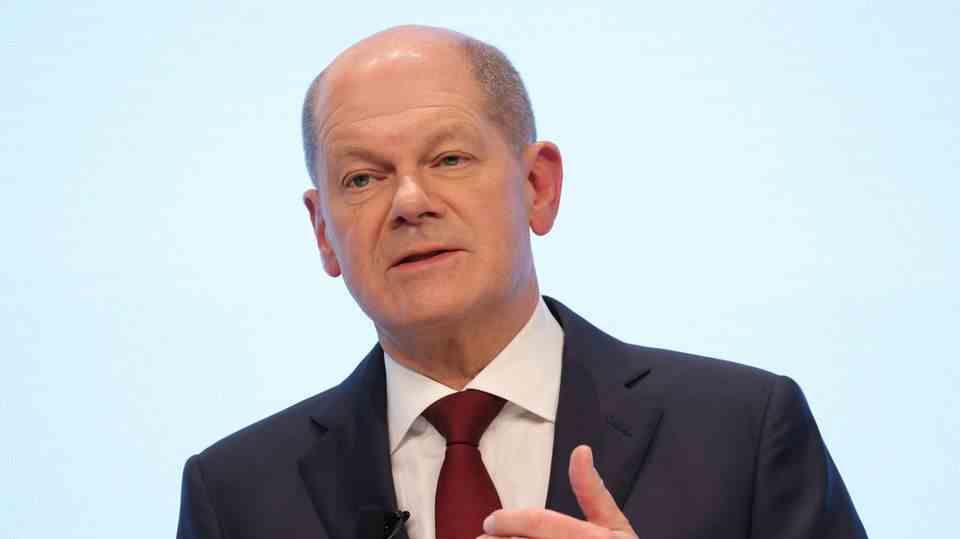Cornerstones for electoral reform
Our Bundestag should be smaller – like the traffic light parties want to shrink the parliament
MEPs vote in the plenum of the German Bundestag (archive photo)
© Christoph Soeder / DPA
The Bundestag should become smaller – but how? The traffic light groups are planning a reform of the electoral law. What has been on the table so far contains political explosives and is likely to put many voters’ understanding of democracy to a hard test.
The Bundestag is big. Way too big. Normally, only 598 MPs should sit in parliament. But since the last federal election in September 2021, there have been 736 members of parliament who have decided on German politics in Berlin. This not only poses a logistical challenge (remember the pictures of employees with cordless screwdrivers in their hands screwing on new parliamentary furniture at the last minute). First of all, it’s expensive. Because every MP is supported (office equipment, MP compensation, reimbursement of travel expenses, etc.). This is rattling along – and has been the cause of a long-lasting discussion about electoral law reform for several legislative periods.
At the time of the grand coalition, the debate did not really get off the ground for many years, because the CSU in particular, as the biggest beneficiary, was on the brakes. But since the traffic light came on, things seem to be moving. SPD, Greens and FDP have written an electoral law reform in the coalition agreement and wanted to decide on the cornerstones in the respective parliamentary groups today. On Thursday they are to be introduced to the electoral law commission in the Bundestag. The corresponding legislative process is scheduled to start in September, and the new electoral law should be in place by the end of the year.
However, it is not to be expected that this will silence the discussion on the subject. And that is due to the proposal that the traffic light groups have planned for the downsizing of Parliament. But it’s also complicated…
What exactly is the problem with electoral reform?
Due to new political actors such as the AfD and changes in the political balance of power, the situation has arisen in recent years that some parties – so far mostly the CDU and CSU, but recently also the SPD – win significantly more direct mandates than they are entitled to based on the share of second votes would. Since a constitutional court ruling in 2013, these so-called overhang mandates have to be compensated for by additional compensatory mandates. The effect: a mammoth parliament with currently 736 instead of the regular 598 parliamentarians.
What are the traffic light plans for a smaller Bundestag?
It is envisaged that the allocation of seats will be strictly based on the results of the second votes between the parties that receive more than five percent of the votes. The number of mandates would thus be fixed at 598. If a party achieves more direct mandates in the remaining 299 constituencies than it is entitled to based on this calculation, those with the lowest proportion of first votes in a federal state should no longer be allocated. Overhang and compensation mandates cannot arise with this system.
How can all constituencies still be represented in Parliament?
The catch with the traffic light idea is that a constituency whose direct winner falls victim to the capping process may no longer be represented in parliament. That sounds anything but democratic. The CSU has already announced a constitutional complaint if the traffic light proposals should become reality. “It is not democratic that applicants who have won their constituency are denied access to parliament,” said CSU regional group leader Alexander Dobrindt on radio station Bayern 2. “It’s clearly unconstitutional, I’ll go further, it’s close to election fraud with Announcement.”
To solve the problem, the traffic light groups have come up with the so-called second preference (or substitute vote) for the direct mandate. In short, this means that the voter would have to put an additional cross on the ballot paper, whoever they want to send to Berlin for the constituency in case the first-place winner does not get a chance. Sounds crazy complicated – and could ensure the curious case that the direct mandate falls to the one who has perhaps only received the third most votes in the constituency.
Isn’t there another way?
The matter is just complex. Disregarding the best-placed candidates in the constituencies certainly violates democratic principles. On the other hand, the distribution of seats then reflects exactly the will of the voters expressed in the second votes. In its electoral reform, the previous government had planned to reduce the number of constituencies to 280 or even fewer from 2024. However, that would only have reduced the number of overhang mandates and not completely eliminated them. Other proposals envisaged an even greater reduction in the number of constituencies, which would have led to extremely large constituencies in terms of area, especially in rural areas.
So what next?
One already suspects it with this complex topic: Even if the traffic light gets its proposals through and the legislative process is completed by the end of the year: In the end, the reform is likely to end up in one form or another before the constitutional court. And it will be some time before a decision is made. It is therefore quite possible that additional chairs will have to be screwed on again in the next Bundestag.
Sources: With material from AFP





